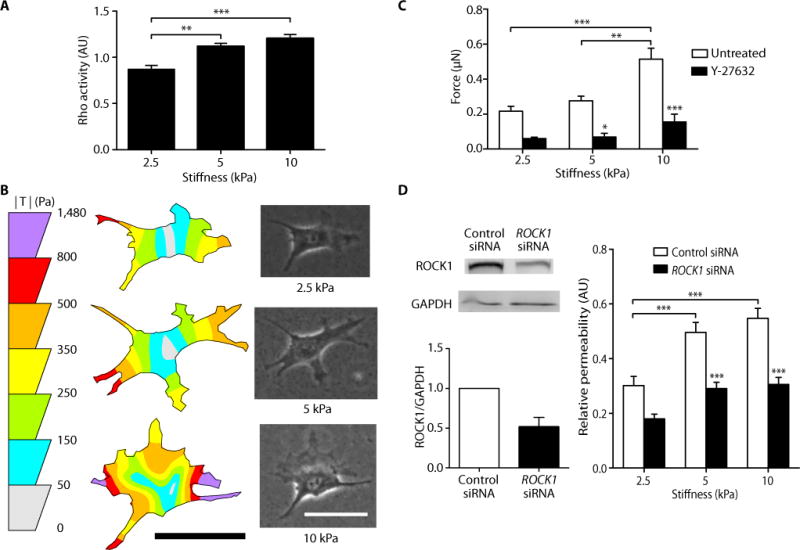Fig. 3.

Matrix stiffness increases Rho activity and cell contractility, and inhibition of cell contractility restores barrier integrity. (A) Rho activity of BAECs cultured on polyacrylamide gels of different stiffness (three independent experiments, each performed in duplicate). Data are means ± SEM. **P < 0.01, ***P < 0.001 (Tukey’s test). (B) Representative traction force distribution maps and phase images of BAECs on gels. Scale bars, 50 μm. (C) Traction force microscopy measurements of cell contractility with (n = 9–12 cells) or without (n = 19–34 cells) Y-27632 treatment. Data are means ± SEM. *P < 0.05, **P < 0.01, ***P < 0.001 (Tukey’s test) compared to respective untreated conditions, unless otherwise indicated by brackets. (D) RNAi of ROCK1 decreases stiffness-induced endothelial permeability. (Left) Western blot analysis and densitometry quantification of RNAi of ROCK1 (n = 2). (Right) Relative permeability of BAECs cultured on gels of varying stiffnesses with (n = 13–15 gels) or without (n = 13 gels) siRNA knockdown of ROCK1. Data are means ± SEM. *P < 0.05, **P < 0.01, ***P < 0.001 (Tukey’s test) compared to respective control siRNA, unless otherwise indicated by brackets.
